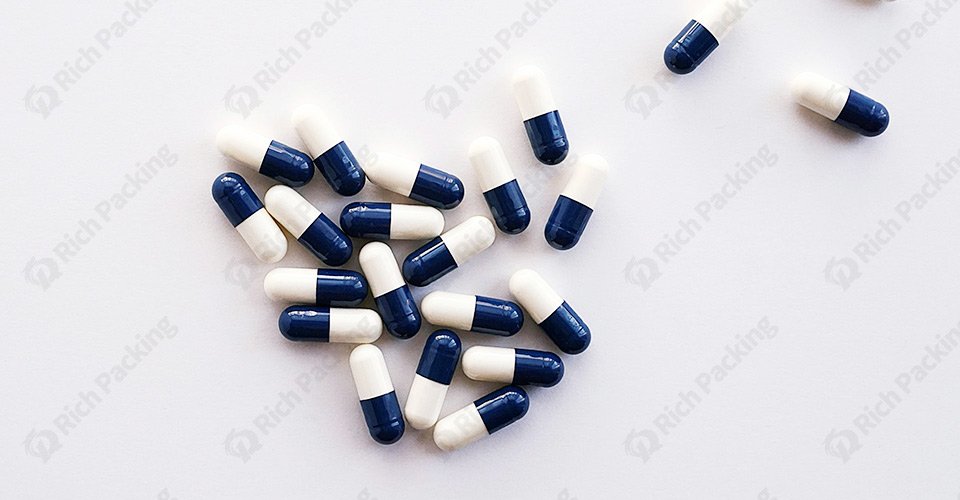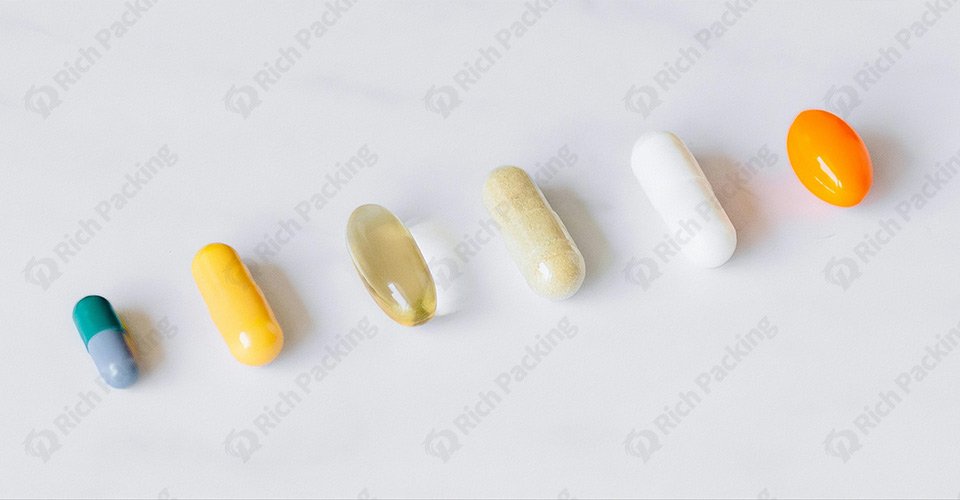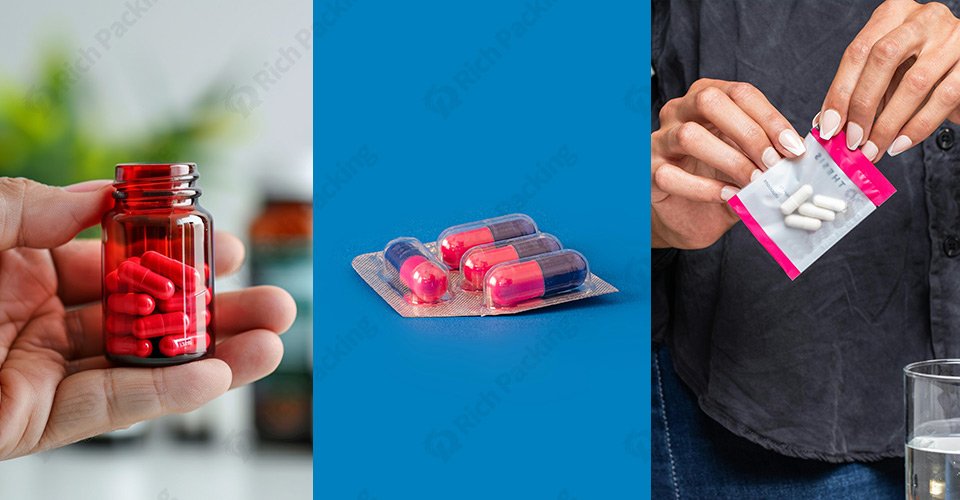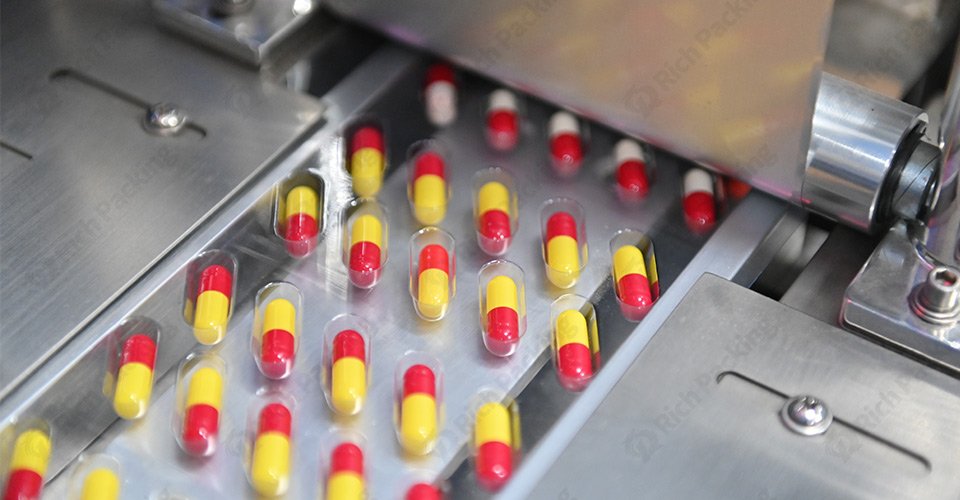Verpackungskapseln Die effiziente Verpackung ist entscheidend für die Sicherheit, Langlebigkeit und Qualität Ihrer Kapseln. Ob für pharmazeutische Zwecke oder Nahrungsergänzungsmittel – ein geeignetes Kapselverpackungssystem spielt eine entscheidende Rolle. In diesem Leitfaden gehen wir detailliert auf die verschiedenen Methoden und Geräte zur Kapselverpackung ein und helfen Ihnen, fundierte Entscheidungen für Ihren Verpackungsbedarf zu treffen.

Die Verpackung von Kapseln geht tatsächlich über die Ästhetik hinaus; sie gewährleistet:
· Schutz vor Umwelteinflüssen : Kapseln reagieren sehr empfindlich auf Feuchtigkeit, Licht und Temperatur. Eine geeignete Verpackung schützt sie vor diesen Einflüssen.
· Wahrung der Integrität : Die Verpackung schützt die Kapseln vor physischen Schäden während des Transports oder der Lagerung.
· Kundenzufriedenheit : Gut verpackte Kapseln behalten ihre Wirksamkeit und geben den Kunden Vertrauen in Ihr Produkt.
Die Kapselverpackung ist zudem entscheidend für die Einhaltung gesetzlicher Vorschriften und die Gewährleistung der Kontaminationsfreiheit der Kapseln. Ein schlecht verpacktes Produkt kann zu Qualitätseinbußen und Verstößen gegen gesetzliche Vorschriften führen, was wiederum finanzielle Schäden und Reputationsschäden zur Folge haben kann.
Das Verständnis der spezifischen Anforderungen verschiedener Kapseltypen hilft bei der Auswahl der richtigen Verpackungsmethode:
|
Kapseltyp |
Eigenschaften |
Verpackungsbedarf |
|
Hartgelatinekapseln |
Spröde bei Feuchtigkeitseinwirkung; ideal für Pulver |
Luftdichte und feuchtigkeitsbeständige Verpackung |
|
Weichgelatinekapseln |
Ölgefüllt; anfällig für Verformungen |
Lichtdichte und physikalisch schützende Verpackung |
|
Vegetarische Kapseln |
Pflanzlich; anfällig für Austrocknung oder Rissbildung |
Flexible Verpackung, die den Feuchtigkeitshaushalt aufrechterhält |
Jeder Typ erfordert eine maßgeschneiderte Verpackung, um seine einzigartigen Eigenschaften zu bewahren.

Beim Verpacken von Kapseln gibt es verschiedene Methoden. Jede Technik erfüllt spezifische Anforderungen, sei es die Erhaltung der Frische, die Verbesserung der Haltbarkeit oder der Komfort. Lassen Sie uns die gängigsten Methoden im Detail analysieren.
Blisterverpackungen gehören zu den beliebtesten Methoden für die Kapselverpackung. Dabei werden Kapseln in einem vorgeformten Kunststoffhohlraum versiegelt, der mit einer Schicht Aluminiumfolie abgedeckt ist. Diese Methode bietet hervorragenden Schutz vor Umwelteinflüssen wie Feuchtigkeit, Luft und Licht.
Vorteile:
· Feuchtigkeitsbarriere: Blisterpackungen bieten einen hervorragenden Schutz vor Feuchtigkeit.
· Portionskontrolle: Durch die einzelnen Hohlräume können Benutzer jeweils nur auf eine Dosis zugreifen, ohne die anderen zu beeinträchtigen.
· Manipulationsschutz: Die Aluminiumversiegelung stellt sicher, dass die Kapseln intakt bleiben, bis der Verbraucher sie öffnet.
Verwendete Verpackungsausrüstung:
· Kapsel-Blister-Verpackungsmaschine : Diese automatisierte Maschine formt Hohlräume, platziert Kapseln und versiegelt die Verpackung in einem optimierten Prozess. Maschinen wie die Rollenblisterverpackungsmaschine DPH-270Max sind für schnelles und präzises Blisterverpacken ausgelegt.
Häufige Anwendungen: Blisterpackungen werden in der Pharmaindustrie häufig verwendet, insbesondere für verschreibungspflichtige Medikamente, da sie die Dosierungsintegrität und Patientensicherheit gewährleisten.
Eine weitere weit verbreitete Methode zur Kapselverpackung ist die Abfüllung in Flaschen. Die Kapseln werden in Plastik- oder Glasflaschen gefüllt, die mit einem Sicherheitsverschluss verschlossen werden und oft ein Trockenmittel enthalten, um die Kapseln trocken zu halten.
Vorteile:
· Massenspeicherung: Ideal zum Verpacken einer großen Anzahl Kapseln in einem Behälter.
· Kosteneffizienz: Im Vergleich zu einzelnen Blisterpackungen wird weniger Material verbraucht.
· Verbraucherkomfort: Einfach zu lagern und zu transportieren.
Verwendete Verpackungsausrüstung:
· Kapselzähl-Abfüllmaschine : Maschinen wie die Kapselzähl- und Abfüllmaschine DSL-16R zählen und füllen Kapseln effizient in Flaschen und gewährleisten dabei Präzision und Geschwindigkeit.
Häufige Anwendungen: Die Kapselabfüllung wird häufig für rezeptfreie Nahrungsergänzungsmittel und Vitamine verwendet, bei denen große Mengen für den regelmäßigen Verzehr verpackt werden.

Sachets sind kleine, versiegelte Beutel, die eine abgemessene Anzahl Kapseln enthalten. Diese Methode eignet sich besonders für Reisepackungen oder Produktproben.
Vorteile:
· Portabilität: Kompakt und leicht für Verbraucher unterwegs.
· Hygiene: Jeder Beutel bleibt bis zur Verwendung versiegelt, sodass die Frische erhalten bleibt.
Verwendete Verpackungsausrüstung:
· Beutelfüllmaschinen: Diese Maschinen gewährleisten das genaue Befüllen und Verschließen von Kapseln in kleinen Beuteln.
Häufige Anwendungen: Wird häufig in Werbekits oder als praktische Möglichkeit zum Verteilen von Probiergrößen von Nahrungsergänzungsmitteln verwendet.
Bei der Streifenverpackung werden Kapseln zwischen Folien- oder Kunststofffolienlagen versiegelt. Jede Kapsel oder eine kleine Gruppe von Kapseln wird einzeln verpackt.
Vorteile:
· Minimaler Materialverbrauch: Verbraucht weniger Material im Vergleich zu Blisterpackungen.
· Wirksame Versiegelung: Bietet luftdichten Schutz.
Verwendete Verpackungsausrüstung:
· Streifenverpackungsmaschinen: Diese Maschinen erzeugen versiegelte Streifen, die sich ideal zum Schutz kleiner Kapseldosen eignen.
Häufige Anwendungen: Beliebt in pharmazeutischen Anwendungen für kleinere Dosen oder Medikamente zur einmaligen Anwendung.
Bei der Tubenverpackung werden Kapseln in schmale, zylindrische Behälter gegeben, die typischerweise aus Kunststoff oder Aluminium bestehen. Diese Tuben haben oft einen Klapp- oder Schraubverschluss.
Vorteile:
· Platzsparend: Kompaktes Design für effiziente Lagerung.
· Kindersichere Verschlüsse: Bietet Sicherheit für Haushalte mit Kindern.
Verwendete Verpackungsausrüstung:
· Tubenfüllmaschinen: Spezialgeräte, die Kapseln in Tuben füllen und diese effektiv verschließen.
Häufige Anwendungen: Wird für Brausekapseln oder Produkte verwendet, die trocken und kompakt bleiben müssen.
Um Ihnen die Entscheidung zu erleichtern, welche Verpackungsmethode Ihren Anforderungen entspricht, finden Sie hier einen kurzen Vergleich:
|
Verpackungsmethode |
Schutz vor Feuchtigkeit |
Portabilität |
Kosteneffizienz |
|
Blisterpackungen |
Exzellent |
Mäßig |
Mäßig |
|
Kapselabfüllung |
Gut |
Hoch |
Hoch |
|
Beutel |
Mäßig |
Exzellent |
Mäßig |
|
Streifenverpackung |
Gut |
Hoch |
Hoch |
|
Tubenverpackung |
Mäßig |
Exzellent |
Mäßig |

Um Präzision und Effizienz zu erreichen, spielt die richtige Ausrüstung eine entscheidende Rolle. Zu den wichtigsten Empfehlungen gehören:
|
Verwendete Ausrüstung |
Geschwindigkeit |
Genauigkeit |
Automatisierungsgrad |
|
Blisterverpackungsmaschine |
Hoch |
Hoch |
Vollautomatisch |
|
Kapselzählmaschine |
Hoch |
Hoch |
Vollautomatisch |
|
Beutelfüllmaschine |
Mäßig |
Hoch |
Halbautomatisch |
|
Streifenverpackungsmaschine |
Hoch |
Hoch |
Vollautomatisch |
|
Tubenfüllmaschine |
Mäßig |
Mäßig |
Halbautomatisch |
Diese Hochgeschwindigkeitsmaschine automatisiert den Prozess der Blisterformung, der Kapseleinlage und der Versiegelung der Packungen. Die DPH-270Max Rollenblister-Verpackungsmaschine ist ein Paradebeispiel, bekannt für seine Zuverlässigkeit und Anpassungsfähigkeit an verschiedene Kapselgrößen.
Hauptmerkmale:
· Hochgeschwindigkeitsbetrieb für die Großserienproduktion.
· Fortschrittliche Versiegelungstechniken zur Wahrung der Kapselintegrität.
· Kompatibilität mit verschiedenen Materialien.
Für Abfülllösungen ist die DSL-16H Kapselzähl-Abfüllmaschine sorgt für genaues Zählen und Befüllen. Es minimiert menschliche Fehler und maximiert die Effizienz.
Hauptmerkmale:
· Hohe Präzision mit pneumatischen Trennsystemen zur Vermeidung von Kapselstaus.
· Benutzerfreundliche Oberfläche für einfache Bedienung.
· Geeignet für kleine und große Produktionsmaßstäbe.
Die Wahl des richtigen Kapselverpackungssystems ist entscheidend für die Qualität und Verwendbarkeit der Kapseln. Ob Blisterverpackung, Abfüllung oder andere Methoden – das Verständnis der Vorteile und der benötigten Ausrüstung führt Sie zur besten Lösung. Mit Maschinen wie der DPH-270Max Rollenblister-Verpackungsmaschine Und DSL-16H Kapselzähl-Abfüllmaschine können Sie bei jedem Schritt Ihres Verpackungsprozesses Effizienz und Präzision sicherstellen.